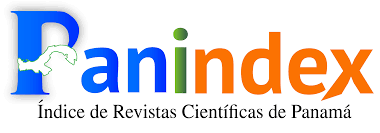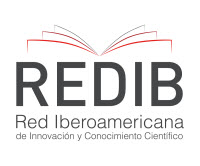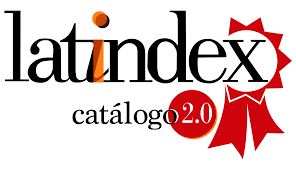

This work is licensed under a Creative Commons Attribution-NonCommercial-ShareAlike 4.0 International License.
Esta obra está bajo licencia internacional https://creativecommons.org/licenses/by-nc-sa/4.0/deed.es
La revista (y sus contenidos) emplean las licencias Creative Commons, específicamente la del tipo CC BY NC SA 4.0, la cual establece que “el beneficiario de la licencia tiene el derecho de copiar, distribuir, exhibir y representar la obra y hacer obras derivadas siempre y cuando reconozca y cite la obra de la forma especificada por el autor o el licenciante”. La licencia del tipo CC BY NC SA 4.0 contempla tres categorías,
- Atribución.
- No Comercialización de la obra.
- Compartir igual
Los lectores son libres de:
- Compartir — copiar y redistribuir el material en cualquier medio o formato
- Adaptar — remezclar, transformar y construir a partir del materialLa licenciante no puede revocar estas libertades en tanto usted siga los términos de la licencia
- Siempre y cuando se respeten y contemplen la atribución de autoría y la no comercialización del material.
Abstract
This case study is a follow up on a previous article and explores the adaptation strategies of a seasonal worker in Midwestern United States. The extensive literature on Latinos in the US does not analyze such transnational, growing communities in Midwestern cities. The complex definitions of identity, literacy and bilingualism added two more layers to the conflicted concepts of transnationalism and respeto to adapt to a foreign culture as defined by Farr (2006). Although the participant is recognized bilingual by himself and others, his definition of belonging to a culture does not allow him to see as neither fully Hispanic nor American. A partnership between community members would help integrate individuals in similar circumstances to an area not as demographically diverse as other North American cities.
Keywords:
References
Al Ali, N. and Koser, K. (2002) New Approaches to Migration: Transnational Communities and the Transformation of Home. London, New York: Routledge
Barragán, E. (1990) Más allá de los caminos: Los rancheros del Potrero de Herrera. Zamora: El Colegio de Michoacán.
Farr, 2006. Rancheros in Chicagoacán: Language and Identity in a Transnational Community. Austin: University of Texas Press.
Centre for Canadian Language Benchmarks, 2012. Canadian Language Benchmarks. English as a Second Language for Adults. Retrieved from https://www.canada.ca/content/dam/ircc/migration/ircc/english/pdf/pub/language-benchmarks.pdf on November 19, 2021.
Gee, J. 1999. An introduction to discourse analysis: theory and method. New York: Routledge.
Guerra, J., 1998 Close to home. Oral and Literate practices in a Transnational Mexicano Community. New York: Teachers College Press.
LM 110: Big 100 Companies (2005) Lawn and Landscape Magazine, Vol 7, July, pp. 24-27
Landscape Management, 2021. “It starts at the top”. Landscape Management, June, pp. 1-19.
Nevárez, C. and Castañeda, X. 2019. “Policy Solutions are Needed for a Strong Latino Immigrant Workforce”. American Journal of Public Health. July, Vol. 119, No 7, pp. 995-997.
Reid-Merit, P. and Rodríguez, M. 2020. Race and Identity in Hispanic America: The White, the Black and the Brown. Santa Barbara: ABC-CLIO LLC.
United States Citizenship and Immigration Services (USCIS) 2022. H2B Temporary Non-Agricultural Workers. Retrieved from https://www.uscis.gov/working-in-the-united-states/temporary-workers/h-2b-temporary-non-agricultural-workers on July 9th, 2022.
Valdés, G. 1996. Con Respeto. Bridging the Distances Between Culturally Diverse Families and Schools. An Ethnographic Portrait. New York: Teachers College Press.
Vásquez, J. 2006. “Oral Skills of Hispanic Workers in Columbus: Strategies for the Acquisition of Bilingual Skills” Lenguaje, 44 (2), 177-195
Wisniewsky, N. (2004) “H2B. It’s spring clean-up time for this federal program” Lawn and Landscape, Vol. V, May, pp. 38-48.
















